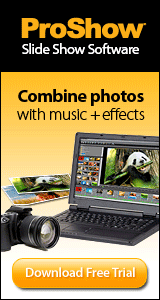DigitalPro Shooter Volume 3, Issue 6, June 2, 2005
Microsoft's Raw file Initiative:
What does this mean to you? If you shoot or plan to shoot Raw files this plug-in architecture means that you'll be able to browse your raw files in a limited way directly from the Windows shell. However, since the plug-ins will almost certainly be similar to the current freeware available from these same vendors, it will not make the experience any faster than using their current free software--it will just integrate the process into Windows. As a result you'll still want to look at investing in value-added solutions of your choice for image browsing, processing and cataloging of Raw files if you process a lot of them or depend on them for your workflow. Perhaps more interestingly, there is nothing to stop other vendors from shipping plug-ins (codecs) for raw camera files. So you may have a choice between whether the Windows shell will display your raw files using Nikon's, Canon's, Adobe's, Bibble's or some other software. This type of flexibility is a good thing in general but expect to see some teething pains as the plug-ins "fight" over file types--the same way we've seen with the conflict between Nikon's own software and Adobe Photoshop's ACR wrestling over NEF files. Microsoft has also announced a new PowerToy for Raw file Thumbnailing and Viewing which will be a free download and provide a "taste" of the capabilities that will be in Longhorn. Initially it will only support a certain number of cameras. I'm running a pre-release version and have posted a SNEAK PREVIEW so you can see what all the buzz is about. What is equally interesting is what Microsoft didn't announce. They didn't announce support for DNG or anything about a standard Raw file format at all. By endorsing a decoder/plug-in architecture they are tacitly admitting that they see the reality of a plethora of (undocumented) Raw file formats continuing for at least several years (since Longhorn is their "OS for the next decade"). This is not surprising, but still is perhaps a little depressing to those who believe that Raw file formats should be documented and eventually corralled into some type of standard framework. Along with Adobe and DNG, first and foremost among those groups is the OpenRaw initiative: The OpenRaw InitiativeStarted by Nikon photographer Juergen Specht and now boasting over 400 supporters, the OpenRaw initiative (http://openraw.org) is a collaborative effort to get Raw file formats openly documented. Their site speaks for itself as to the reasons this would be a good thing, but first and foremost is that the assets of photographers are by and large being created in Raw formats going forward and there are many inherent risks to having those assets in undocumented and proprietary file formats. Vendors including Nikon and Canon have issued reassurances that they will "always" be around to provide readers for the formats, but aside from being difficult to trust such claims it still begs the question of why not make the formats readable in the first place? There isn't much official word from the camera companies on that subject except for one "press advisory" from Nikon which we've posted on (http://nikondigital.org), but in short camera manufacturers claim it would reveal too many of their trades secrets to tell the industry what was in their raw files. Instead they endorse the idea of providing developer kits which allow software developers to process the Raw files as a "black box" in much the same way the decoders for Longhorn will do. Unfortunately the "black box" approach offers only limited flexibility to software developers and in particular they do not allow direct access to the data in the files for alternate processing. They also don't typically allow the software developer to tag or otherwise annotate the raw file with meta-data the way the vendor themselves is able to do. The question is whether the camera vendors' protests are a red herring and that the real reason they are keeping the file formats secret and proprietary to their own software is to help lock photographers into their photo system including their cameras and software. The White Balance issue: Specifically this issue reached a fever pitch when Nikon started deliberately encrypting the "as shot" white balance information for their newest D-SLRs. The "as shot" white balance is the setting the camera actually decided on for white balance, either as set by the user or determined via Preset or Auto mode. This encryption made it more difficult for vendors such as Adobe, Bibble and Phase One to process Raw images using the default camera settings. In particular if the camera was set to "Auto" white balance, there was no longer a straightforward way to read back what the camera decided the white balance was for the scene. As a result, Nikon D2X images shot on Auto WB can look dramatically different when opened in Nikon Capture and Adobe PS CS2 / ACR. While this issue has been over-dramatized a little, it does create an important precedent and begs the question about whether by promoting Raw files the way they have the camera vendors have created a backlash of photographers who expect them to be documented the same way TIFF & JPEG files are. Personally, I'm a big believer in open standards, and that 99% of what is in Raw image files could be safely standardized without harming anyone's intellectual property (David Coffin, author of dcraw has in fact published the source code to decode 99% of what is in the files already anyway). On the flipside, the OpenRaw group is pushing for 100% disclosure and I don't see that as being practical. If there are truly essential innovations a vendor needs to protect, I believe that is their right--particularly while they are filing for patents and the invention is still confidential. But hiding behind confidentiality as an excuse for not releasing the obvious portions of the format doesn't seem likely to build trust with customers. Having lived through standards wars many times before, some major
economic shift will need to occur to change this complex morass of file
formats, codecs, plug-ins and initiatives. Perhaps if the US Government
decided to only purchase cameras with documented Raw formats, for example.
That has worked before to coalesce an industry. Should that happen, there is
one emerging standard already waiting in the wings that comes and goes in
the news, Adobe's DNG (Digital Negative) format.
What about Adobe's DNGAdobe, after having little luck getting any help from camera vendors on decoding Raw files directly, and wanting to add Raw file processing to Photoshop, took the time to create and document an interesting "Digital Negative" format. Designed to allow both raw and partially processed sensor data to co-exist in a single file envelope (much like TIFF can allow many different formats or pages to co-exist) DNG also allows both public and private meta-data. The public data would be used for tagging and image rendering while the private data could be reserved by the vendor or other software developers for their "secret sauce" used by their proprietary solutions. This is a really nifty solution because it allows everyone to safely read, edit and update the Raw files without either damaging the original Raw image data or the "secret sauce" that has been added. Essentially DNG offers something for everyone: developers, photographers and even camera vendors. So why isn't anyone using it? Simply put, because it is different and therefore expensive to adopt and there is no compelling economic incentive. As long as camera vendors can get by with their own formats they will. There is also some fear that Adobe will treat DNG in a proprietary fashion. Frankly I think that too is a red herring as if there was credible interest they would be willing to work with an industry standards group to shepherd its future. What does this mean to the Photographer?Well, unfortunately, the net result is more of the same--at least for the time being. Lots of formats, lots of semi-compatible solutions, lots of complexity. It is similar to the current mess in digital video formats and will have the same bewildering array of competing codecs and unviewable files unless something changes to force the industry to move towards openness, standardization, or both. Microsoft, Adobe and Apple have all made moves to try and simplify the issues for their customers and are to be lauded for their efforts, but without active cooperation from the camera vendors they can only do a limited amount. The worst case is photographers and companies with multiple brands of cameras--or who get images submitted by shooters with various brands of cameras. The situation is almost a lose-lose. Trying to keep up with every vendor's offering (assuming they make one for your platform) is tricky, but using a "one size fits all" processor like Adobe Camera Raw in Photoshop puts you at odds with the camera vendors who are deliberately obscuring information to make it harder for third party processors such as ACR to function optimally. For long term archival of your Raw files, I strongly suggest that you also keep a TIFF processed version. Sure it is not as flexible as the original Raw file, but it is more likely to be readable in 10, 20, or 100 years. DNG is another alternative, but until there is more support for it I'm not sure I have faith in it for the next century. --David Cardinal, Editor, DigitalPro Shooter New ProductsPhoto Viewing: I'm still in love with my Epson P-2000. I've read on the net where you can even replace the disk drive with a larger one, but since mine is a loaner I figure I probably shouldn't try. In the last month it really helped on a shoot for a magazine where the AD could review the images with me right on site and at my Bay photo safari where participants without a laptop could stick their cards in to review & edit their images while we were still in the field. Sensor Cleaning: I've also been using some of the new "dry" sensor cleaning products and I'm incredibly thrilled. I was always really nervous about using the liquid solutions on my sensor because of the hassle of trying to make sure they didn't smear. If you have anything truly sticky you might need to use liquid, but I've gotten dust and even little droplets of what seemed like grease off using these new "dry" swabs. I've been using swabs from both VisibleDust (http://www.visibledust.com) and DSLRClean from IMS ( http://www.intemos.com ) In PrintI've got an article in the upcoming June 28th issue of PC Magazine on "Traveling with Digital." Worth the read for some tips on digital photography on the road or documenting your travels. DigitalPro TipWe've released DigitalPro 3.1, a free upgrade to DigitalPro3 for all licensed users. It includes full support for all the latest Nikon & Canon D-SLRs (including their Raw file formats), as well as lots of new features and improved color rendering and LightTable performance. You can download the upgrade or a free fully functional 30-day evaluation from http://www.proshooters.com.
|
Search our Sites:





